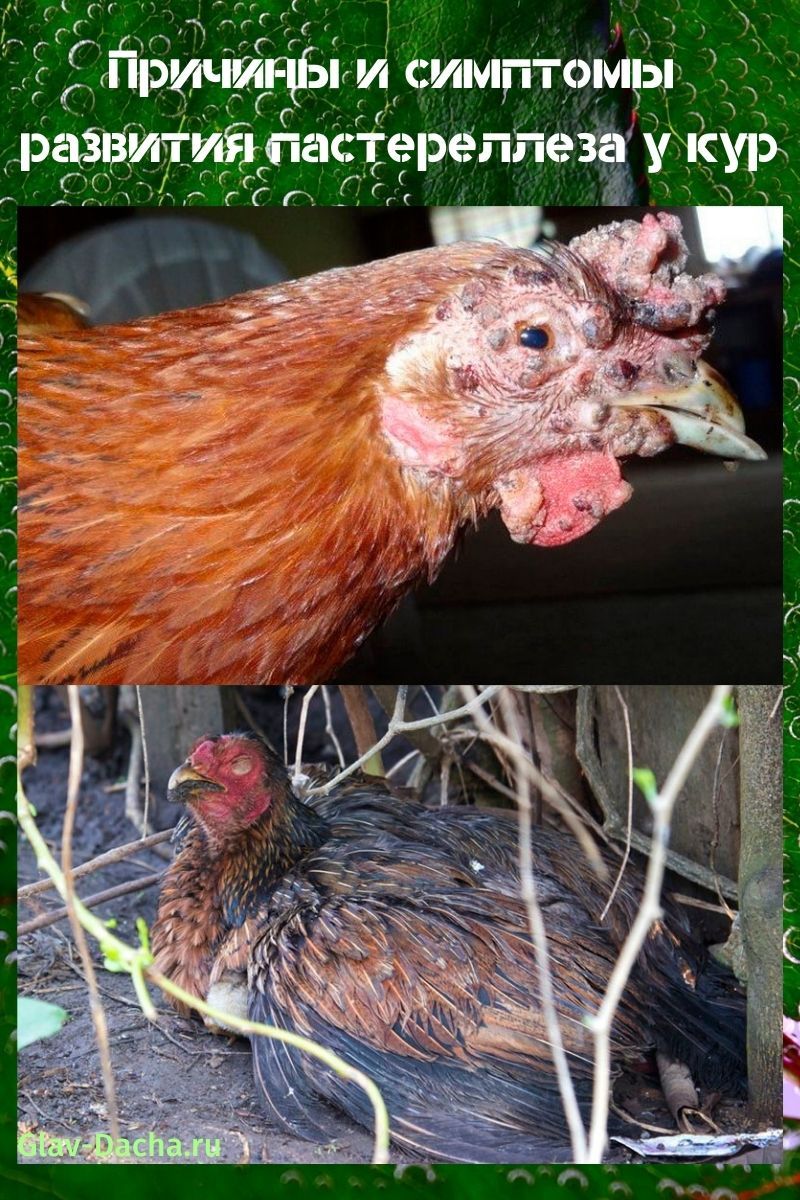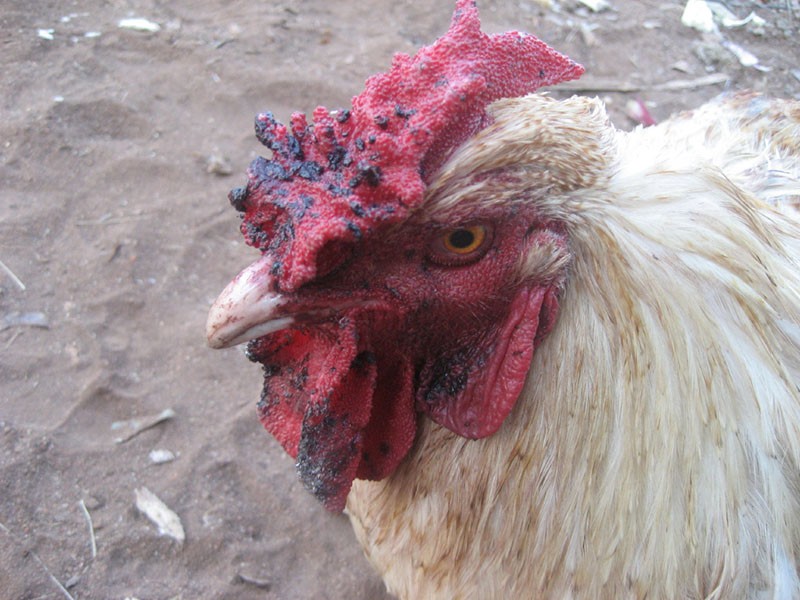Causes and symptoms of pasteurellosis in chickens
 It is helpful for pet breeders to familiarize themselves with the symptoms and treatment of common ailments. Pasteurellosis in chickens is a disease caused by gram-negative bacteria. It is noteworthy that it is found not only in birds (geese, ducks, turkeys), but also in mammals, for example, cats or pigs. The difference in the structure of bacteria greatly complicates the process of treating a herd. Chickens are usually susceptible to type A pathogens with a high survival rate.
It is helpful for pet breeders to familiarize themselves with the symptoms and treatment of common ailments. Pasteurellosis in chickens is a disease caused by gram-negative bacteria. It is noteworthy that it is found not only in birds (geese, ducks, turkeys), but also in mammals, for example, cats or pigs. The difference in the structure of bacteria greatly complicates the process of treating a herd. Chickens are usually susceptible to type A pathogens with a high survival rate.
Pasteurellosis in chickens: symptoms

Symptoms of the acute form include the following signs:
- wheezing;
- poor appetite;
- constant thirst;
- difficulty breathing;
- the presence of white discharge from the nose;
- the occurrence of cyanosis on the ridge;
- an increase in body temperature up to 44 ° C;
- discoloration of feces (reddish tint);
- loss of feathers, or constantly ruffled feather cover.
Pasteurellosis in chickens is fatal in the first 3-5 days of the acute form of the disease. The survival rate of the livestock is only 10-15%.
When poultry has gone through the acute phase of the disease, it becomes chronic. Sometimes this stage occurs when the activity of pathogens is weak.
Symptoms of the chronic course of pasteurellosis include:
- inflammatory processes in the joints (visible with the naked eye);
- an increase in the size of the intermaxillary space;
- the appearance of dark spots on the ridge;
- poor appetite;
- apathy.
The course of the chronic form takes from 1 week to 1 month. In the absence of the right treatment, all poultry will be fatal.
The earlier the disease is diagnosed, the higher the chickens' chances of recovery.
Causes of occurrence

The main causes of pasteurellosis are considered:
- weak immunity;
- poor diet;
- inappropriate conditions of detention.
In some cases, chickens become infected with pathogens upon contact with wild birds. As the disease progresses, the disease is transmitted from sick to healthy individuals. If the corpses of infected chickens (pathogenic environment) are not removed in a timely manner, the spread of microbes will be much more intense.
 Pasteurellosis, the symptoms and treatment of which every poultry breeder should know, is often caused by parasites. An example is the mites that suck blood from chickens. With excessive moisture in the feed or in unsanitary conditions, pathogenic bacteria multiply faster.
Pasteurellosis, the symptoms and treatment of which every poultry breeder should know, is often caused by parasites. An example is the mites that suck blood from chickens. With excessive moisture in the feed or in unsanitary conditions, pathogenic bacteria multiply faster.
From an infected chicken, pasteurellosis is transmitted to the egg. The disease does not interfere with the development of the embryo and the birth of the chick, however, it becomes a carrier, which often leads to an epidemic in the entire brood.
Treatment of the disease
 The first rule that a poultry breeder must learn is that treatment of acute and chronic pasteurellosis is pointless. Despite the expensive therapy, up to 20-30% of the livestock recover. In surviving chickens after infection, appetite, body weight, and egg production decrease.
The first rule that a poultry breeder must learn is that treatment of acute and chronic pasteurellosis is pointless. Despite the expensive therapy, up to 20-30% of the livestock recover. In surviving chickens after infection, appetite, body weight, and egg production decrease.
A bird that survived after pasteurellosis remains a carrier of the causative agent of the disease, therefore, until the end of its life, it should be isolated from healthy individuals, and its eggs are not recommended for breeding.
If an ailment is detected, individuals who have symptoms of pasteurellosis are isolated. In case of death, the carcasses of chickens are promptly disposed of. The place where the infected livestock is kept is treated with antibacterial compounds.
Many farmers have resorted to pasteurellosis treatment in an attempt to save livestock and extract financial profits from slaughter. Therapy is effective on the first day (sometimes only in the first few hours) of detection of the disease.
To reduce the number of pathogenic microorganisms in the body of chickens, the following drugs are used:
- cobactan suspension - an individual is inoculated once every day (0.1 ml per kg of body weight), the therapeutic course is 3-5 days;
- trisulfone - 200 gr. the medication is diluted in 100 ml of water, used as a drink, the therapeutic course is designed for 5 days;
- levoerythrocycline - 1-2 ml of solution per kg of carcass weight, therapy lasts no more than 5 days.
If there is a large number of poultry, once a month it will not be superfluous to conduct a preventive course. This will reduce the likelihood of the occurrence of pathogens in the chicken habitat. As prophylactic agents, norsulfazole is prescribed (0.5 g per kg of body weight, 2 times a day), Spektam B, Floron, etc.
Disinfectants in the poultry habitat are Monclavid or Ecocid C. If the use of aerosols is not possible, then it is better to use Chlorskipidar. The preparation of the composition will not cause difficulties: 2 g of chlorine is diluted with 0.5 g of turpentine per 1 sq. m. of the processed area. After removing the livestock, bleach (5% solution), iodine monochloride (10% solution) are also used as antiseptic agents, lime.
Aviary disinfection
 If the chickens are walking in the open air, then the entire area is pre-mowed from grass, shrubs, and other vegetation. Pathogens that cause pasteurellosis do not tolerate ultraviolet radiation well. The process of "cleaning" the territory is 10-15 days. After the end of the walk, the place is plowed up and covered with lime, which will prevent the development of a pathogenic environment.
If the chickens are walking in the open air, then the entire area is pre-mowed from grass, shrubs, and other vegetation. Pathogens that cause pasteurellosis do not tolerate ultraviolet radiation well. The process of "cleaning" the territory is 10-15 days. After the end of the walk, the place is plowed up and covered with lime, which will prevent the development of a pathogenic environment.
Thus, the symptoms and treatment of pasteurellosis in chickens is the basic knowledge that a poultry breeder must have. This ailment occurs due to a number of reasons, but the main one is considered to be poor conditions for keeping livestock. To prevent the extinction of the livestock, it is necessary to regularly take preventive measures aimed at the extermination of pathogenic microorganisms.